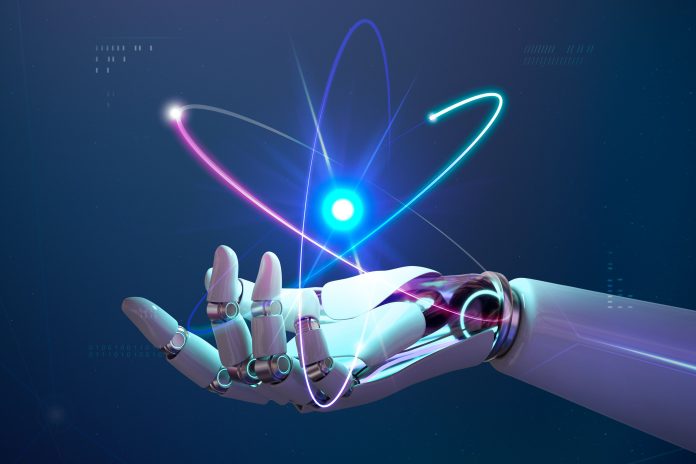Robotics is the form of technology that deals with the design, construction, operation, and use of robots, as well as computer systems for their control, sensory feedback, and information processing. Automated machines take the place of humans in dangerous environments or manufacturing processes, or resemble humans in appearance, behaviour, and cognition.
The evolving system of robotics has been driven by the need for automated systems. Perform various tasks without human intervention and by the desire to replicate the abilities and also intelligence of the human mind which led to the creation of a wide variety of robots. From simple machines that perform repetitive tasks to highly advanced robots that can think and learn. Most Factories are using robots for building cars, candy bars, and electronics. Have applications in medicine, military strategies, object discovery underwater, space travel, and exploring other planets. Additionally, robotic technology is beneficial for individuals with no arms or legs.
Uses Of Robotics
- Currently, the field of robotics is developing at a rapid rate due to technological innovations and advancements.
- Researchers continue to brainstorm and innovate on how to design and build new types of robots and want them to be useful for domestic uses, commercial uses, and military intelligence and combat purposes.
- Robots are performing tasks that are too dangerous for humans like neutralizing bombs. Robots can help to search for human survivors in insecure ruins.
- Additionally, they can aid in discovering mines and shells. Robotics is also a teaching aid in STEM. STEM stands for Science, Technology, Engineering, and Mathematics. Nanorobots are yet another advancement made in robotics.
- They transform medicine and human health.
- These are microscopic robots introduced into the human body for medical reasons.
Types of Robots in Different Fields
- Industrial robotics: They are used in manufacturing, assembly, and other industrial processes. A large and highly precise machine is programmed to perform specific tasks such as welding, painting, and packaging and to improve efficiency, reduce costs, and improve the quality of products.
Example: FANUC R-2000iC Articulated robots are perhaps the most recognizable type in industrial settings, characterized by multiple rotary joints resembling a human arm.
- Service robotics: Service robots are used in domestic and personal settings, such as vacuuming robots and personal assistants, designed to assist people with everyday tasks, such as cleaning, and cooking, and in healthcare and elderly care facilities to assist with tasks such as lifting and moving patients.
Example: Nosh is an AI-enabled robot that follows commands and prepares food automatically. The device comes with over 100 pre-loaded recipes in cuisines including Italian and Indian.
- Medical robotics: They are used in surgeries and other medical procedures and are designed to assist surgeons in performing complex procedures with increased precision and accuracy. They are also used in rehabilitation, physical therapy, and other medical applications.
Example: Surgical assistance, modular, and autonomous by using robots in the medical field helps improve patient care and outcomes while increasing operational efficiencies.
- Mechanical robotics: Mechanical robotics involves the design of an industrial robot’s physical structure. This includes the robot configuration, type of robot, joint mechanisms, axes, heat transfer characteristics, and mounting positions, among many other aspects that go into the creation of a new robot.
Example: A temple in India’s southern state of Kerala has replaced an elephant with a life-sized mechanical robot to help devotees conduct rituals in a “cruelty-free” manner.
- Military robotics: These types of robots are used in military operations, such as bomb disposal and surveillance and to perform tasks that are too dangerous for humans, such as defusing bombs and entering buildings. They are also used for reconnaissance, surveillance, and target acquisition.
Example: MQ-28 Ghost Bat Manufactured in Australia by Boeing, the MQ-28 Ghost Bat UAV is a wingman drone that’s 38 feet long and can fly for over 2,000 nautical miles.
- Space robotics: Space robots are used in space exploration and satellite maintenance. They are designed to operate in the harsh conditions of space and are used to repair and maintain satellites, explore other planets, and perform other tasks.
Example: Rovers gather first-hand data about moons and planets by driving about the terrain and taking samples of a surface’s crust.
- Educational robotics: Educational robots teach programming and engineering principles to students are easy to use and are used in schools and universities to introduce students to the concepts of robotics and programming.
Example: MIT professor designed a programming language for children that could be used to make robot “turtles” move in a certain direction, turn around and draw things.
- Search and Rescue Robotics: Search and Rescue robots are used in natural disasters for search and rescue operations and to operate in extreme conditions also locate and rescue victims of natural disasters, for surveying and mapping the affected area and providing real-time information to the rescue team.
Example: One of the examples is Velox, created by Pliant Energy which is a traditional rescue robot its capabilities are astounding. Equipped with silicone fins, Velox can navigate diverse terrains, swim through frigid waters, skate on ice, and clear snow to rescue victims. Its uniqueness shines in scenarios involving thin ice or bitterly cold waters.
- Underwater Robotics: Underwater robots are used for tasks such as underwater exploration, oil rig maintenance, and environmental monitoring and operate in the harsh conditions of the ocean and are used to explore shipwrecks, study marine life, and perform other tasks.
Example: OceanOneK is a five-foot, deep-sea diving humanoid built for exploration that was developed by the robotics lab at Stanford University. The robot is equipped with more advanced haptic feedback systems and stereoscopic vision
- Autonomous vehicles: These vehicles are capable of operating without human input, include self-driving cars, and drones, and improve safety, reduce costs also increase efficiency in transportation. They are also used in various fields like agriculture, logistics, mining, etc.
Example: Some examples are Fetch Robotics, Otto Motors, and GreyOrange. These programmable robots are built to work in put-away, picking, counting, replenishment, and sorting application
These differences vary in robots, irrespective of their form, taking care of repetitive tasks that are better automated and tasks that are risky for human workers. The benefits of robotics to humanity continue to evolve by day with technological advancements. No doubt, robots and the robotics industry are there to revolutionize our modern world for the better.





























